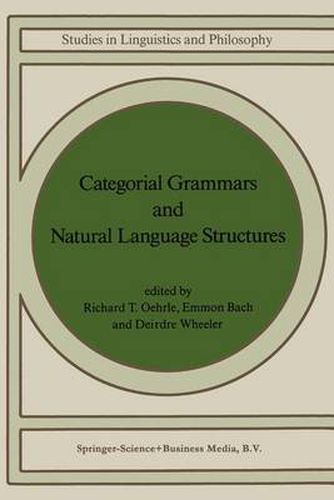Readings Newsletter
Become a Readings Member to make your shopping experience even easier.
Sign in or sign up for free!
You’re not far away from qualifying for FREE standard shipping within Australia
You’ve qualified for FREE standard shipping within Australia
The cart is loading…






This title is printed to order. This book may have been self-published. If so, we cannot guarantee the quality of the content. In the main most books will have gone through the editing process however some may not. We therefore suggest that you be aware of this before ordering this book. If in doubt check either the author or publisher’s details as we are unable to accept any returns unless they are faulty. Please contact us if you have any questions.
For the most part, the papers collected in this volume stern from presentations given at a conference held in Tucson over the weekend of May 31 through June 2, 1985. We wish to record our gratitude to the participants in that conference, as well as to the National Science Foundation (Grant No. BNS-8418916) and the University of Arizona SBS Research Institute for their financial support. The advice we received from Susan Steele on organizational matters proved invaluable and had many felicitous consequences for the success of the con- ference. We also would like to thank the staff of the Departments of Linguistics of the University of Arizona and the University of Massachusetts at Amherst for their help, as weIl as a number of individuals, including Lin Hall, Kathy Todd, and Jiazhen Hu, Sandra Fulmer, Maria Sandoval, Natsuko Tsujimura, Stuart Davis, Mark Lewis, Robin Schafer, Shi Zhang, Olivia Oehrle-Steele, and Paul Saka. Finally, we would like to express our gratitude to Martin Scrivener, our editor, for his patience and his encouragement. Vll INTRODUCTION The term ‘categorial grammar’ was introduced by Bar-Rillel (1964, page 99) as a handy way of grouping together some of his own earlier work (1953) and the work of the Polish logicians and philosophers Lesniewski (1929) and Ajdukiewicz (1935), in contrast to approaches to linguistic analysis based on phrase structure grammars.
$9.00 standard shipping within Australia
FREE standard shipping within Australia for orders over $100.00
Express & International shipping calculated at checkout
This title is printed to order. This book may have been self-published. If so, we cannot guarantee the quality of the content. In the main most books will have gone through the editing process however some may not. We therefore suggest that you be aware of this before ordering this book. If in doubt check either the author or publisher’s details as we are unable to accept any returns unless they are faulty. Please contact us if you have any questions.
For the most part, the papers collected in this volume stern from presentations given at a conference held in Tucson over the weekend of May 31 through June 2, 1985. We wish to record our gratitude to the participants in that conference, as well as to the National Science Foundation (Grant No. BNS-8418916) and the University of Arizona SBS Research Institute for their financial support. The advice we received from Susan Steele on organizational matters proved invaluable and had many felicitous consequences for the success of the con- ference. We also would like to thank the staff of the Departments of Linguistics of the University of Arizona and the University of Massachusetts at Amherst for their help, as weIl as a number of individuals, including Lin Hall, Kathy Todd, and Jiazhen Hu, Sandra Fulmer, Maria Sandoval, Natsuko Tsujimura, Stuart Davis, Mark Lewis, Robin Schafer, Shi Zhang, Olivia Oehrle-Steele, and Paul Saka. Finally, we would like to express our gratitude to Martin Scrivener, our editor, for his patience and his encouragement. Vll INTRODUCTION The term ‘categorial grammar’ was introduced by Bar-Rillel (1964, page 99) as a handy way of grouping together some of his own earlier work (1953) and the work of the Polish logicians and philosophers Lesniewski (1929) and Ajdukiewicz (1935), in contrast to approaches to linguistic analysis based on phrase structure grammars.